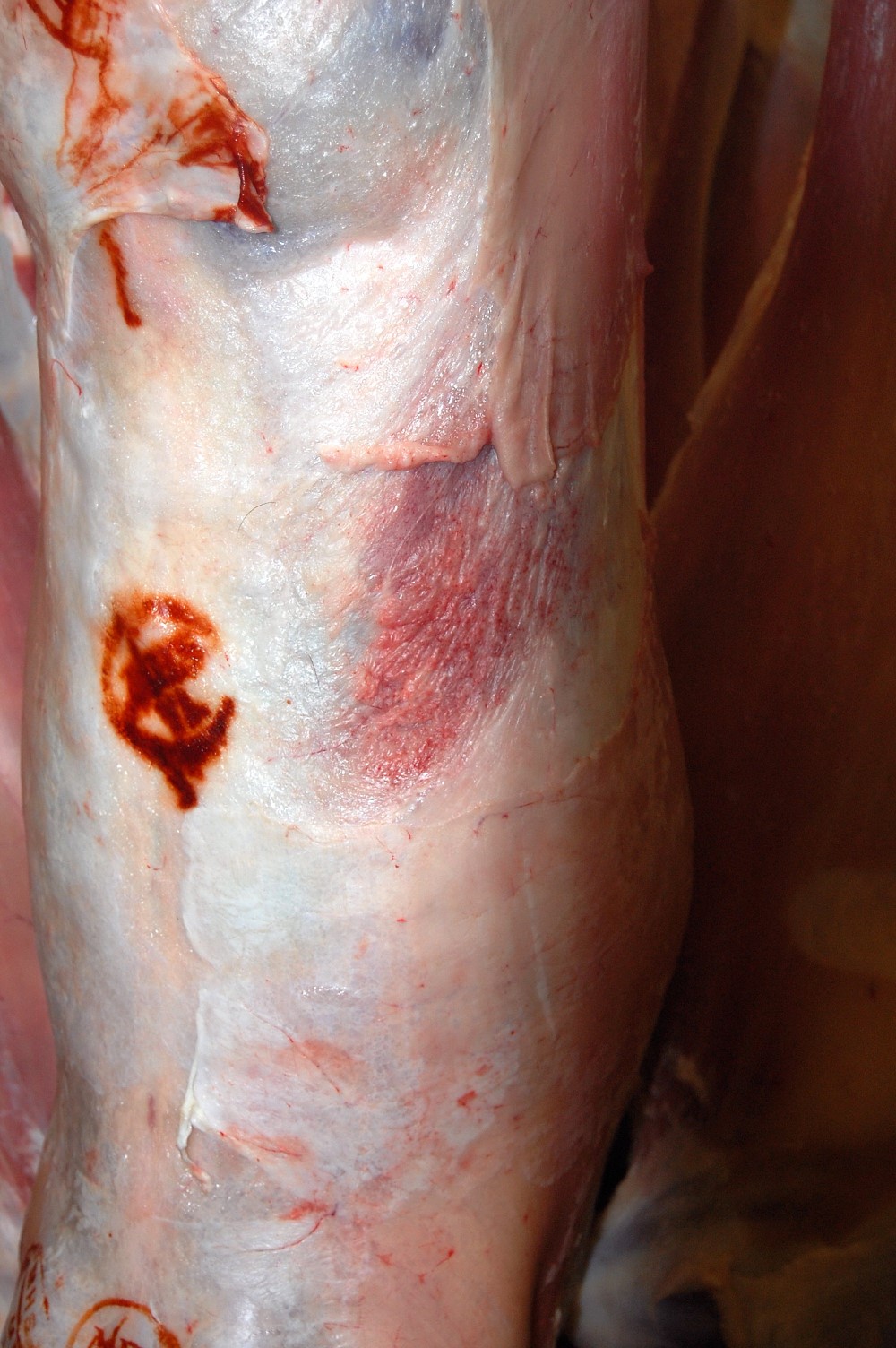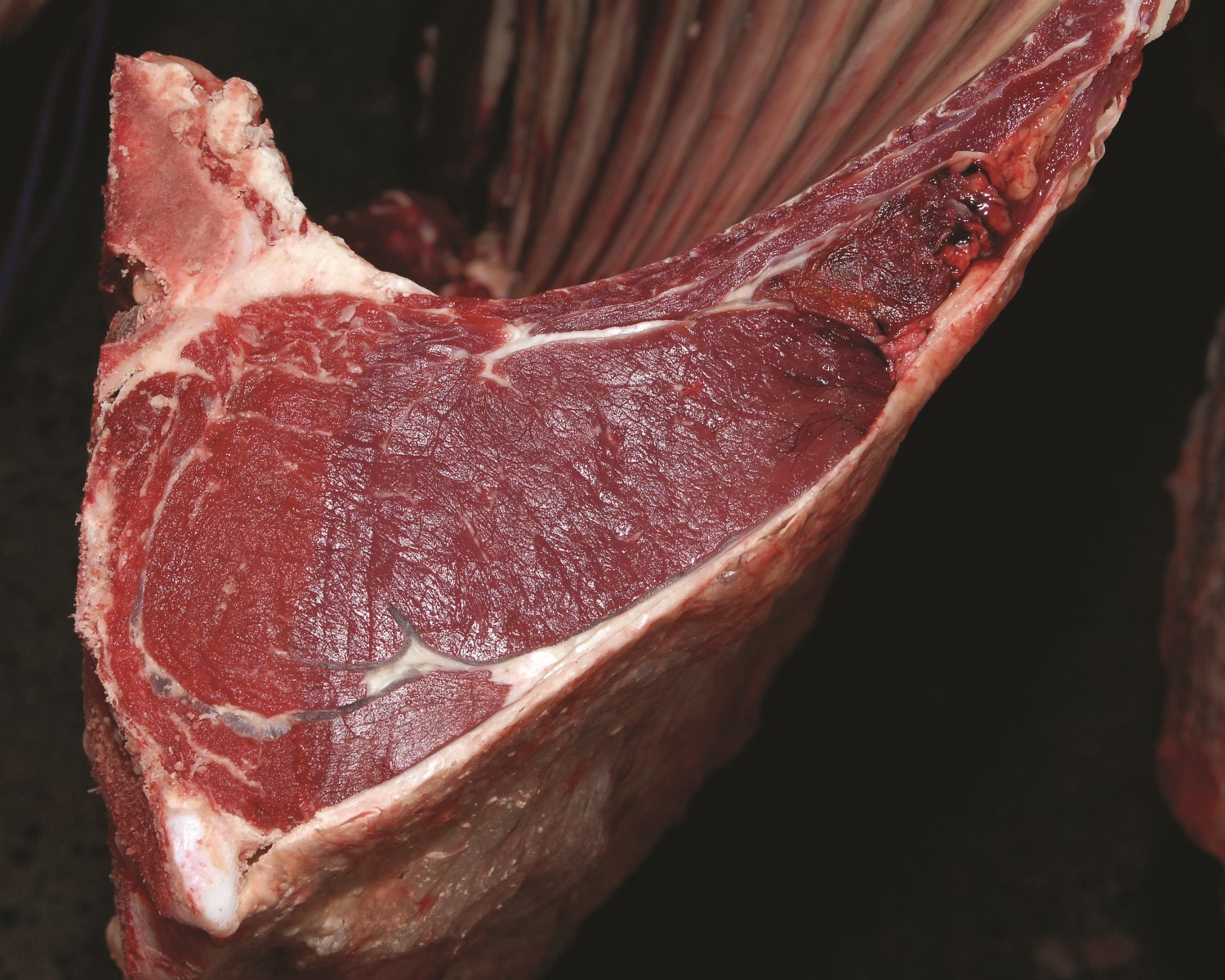- Home
- Knowledge library
- Pre-slaughter handling on meat quality
Pre-slaughter handling on meat quality
The last few days before slaughter can have a significant impact on meat quality. Calmly handling animals will help to avoid a decrease in the meat quality.
Back to: Meat quality and shelf life
Handling and transportation
How animals are delivered for slaughter can affect the look and composition of meat. Any bruising will always reduce carcase value and may have to be trimmed.
The stock should be loaded onto the transport with minimal stress, using natural behaviours to encourage movement. Well-designed stockyards, races and loading ramps will help greatly. Avoid any sharp corners that could prevent the animals from seeing ahead and could cause bruising as they move.


Image: Bruised lamb carcase
See how pre-slaughter stress impacts meat quality
Clean livestock
Ensure that stock is:
- Clean before slaughter
- Not fed in the period immediately prior to transport to the market or slaughterhouse
See the clean livestock policy for more information.
Stunning and slaughter
Most cattle are slaughtered using a captive bolt pistol, but alternatives are available, such as electric stunning and percussive stunning.
Sheep are generally stunned electrically. There are two options:
- Two electrodes to the head
- Head to back stunning that normally applies two probes to the head and one to the back
Pigs can be stunned using the same electric methods as sheep as well as a gas killing method. With gas, pigs are loaded in small groups into gondolas and lowered down into a gas concentration.
In comparison to other factors, the stunning and slaughter of cattle and sheep has very little impact on meat quality. With pigs, stress at this stage can impact meat quality in a noticeable way (see PSE).
Stress prior to slaughter
Cattle
Stress leads to ‘dark cutting beef’ or dark, firm and dry (DFD), which should be avoided. Poorly designed handling and loading facilities can lead to damaged carcases. Important things to note to limit stress, particularity when considering cattle:
- Avoid mixing cattle from different groups
- Use vehicles that avoid overcrowding. Have partitions to restrict movement and offer support during transportation
- Cattle do not like reflective or shiny surfaces in their path
- Cattle handling areas should have smooth walls, no pools of water, a non-slip floor and gradual ramps
- Take special care with bulls as they are more susceptible to stress
- Avoid the use of sticks and goads
- Lairages should be clean with dry bedding and drinking water
 (2)-1.jpg)
Sheep
Lamb can also be categorised as DFD. As well as considering the above, it is also important to note that sheep can bruise easily, especially young lambs, so never:
- Handle/move sheep by grabbing the wool
- Allow sheep to trample over each other in races
- Allow sheep to be trampled during transport
Pigs
Stress prior to slaughter can have a visible impact on pork quality showing up as DFD and/or PSE (pale, soft, exudative), as well as bruises and blood splash. Alongside the aforementioned, it can also be helpful to:
- Minimise human interaction
- Use cooling water sprinklers to reduce temperatures on warmer days
- Keep pigs in known groups until the point of slaughter

